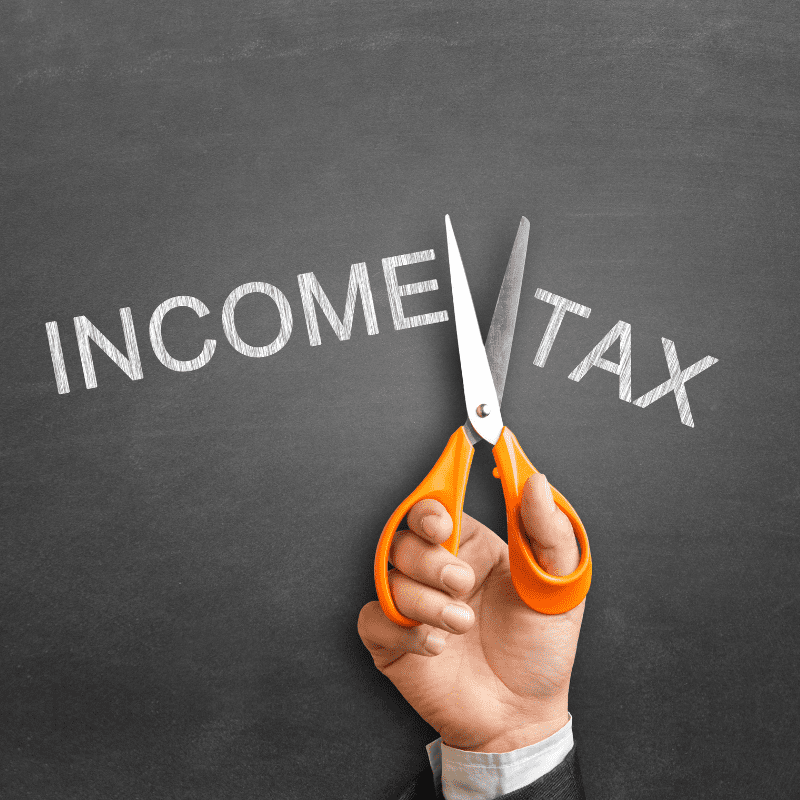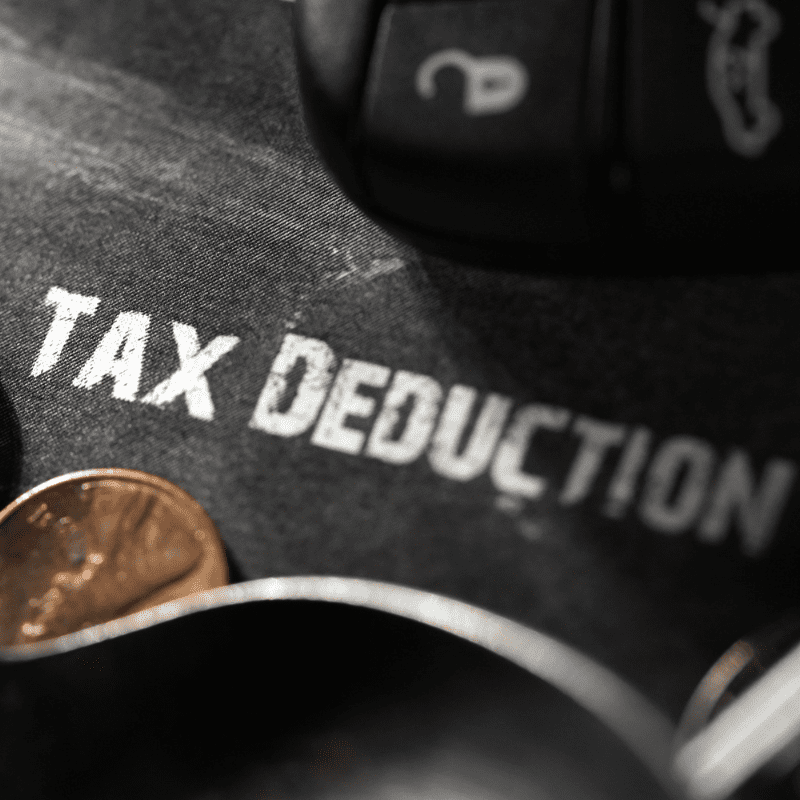Are Union Dues Tax Deductible? What You Need to Know
Are union dues tax deductible? Before the Tax Cuts and Jobs Act (TCJA), unreimbursed employee expenses, such as union membership dues, were considered a miscellaneous itemized deduction on a taxpayer’s personal income tax return. While the TCJA suspended the union dues deduction, there are some important things that you should know.
In this article, we’ll cover everything you need to know about the deductibility of labor union membership, to include:
- How union dues used to work as a tax deduction
- Why the loss of itemized deductions has a less significant impact than you think
- Legislative efforts to reintroduce union dues
Let’s start by walking through the impact of TCJA on itemized deductions.
Contents
The impact of TCJA on tax deductions
The Tax Cuts and Jobs Act, a tax bill signed into law by President Trump in 2017, was one of the most significant changes in the Internal Revenue Code in several decades. Although this new tax law created many wide-sweeping changes, the following two things are most pertinent to our discussion:
- The elimination of certain itemized deductions
- A significant increase in the standard deduction

To better understand the impact these two legislative changes had on taxable income, we should better understand what the pre-TCJA tax code looked like.
Pre-TCJA itemized deductions
Before the TCJA, there were a lot more tax planning opportunities, simply because more out of pocket costs could be used as a tax deduction. These were known as miscellaneous itemized deductions.
Miscellaneous itemized deductions also included unreimbursed employee business expenses, such as professional association dues or union dues.
These miscellaneous deductions were deductible on Schedule A, with a couple of caveats.
Miscellaneous itemized deductions not available to taxpayers taking the standard deduction
Since miscellaneous itemized deductions were calculated using Schedule A, they were not available to taxpayers unless they itemized all tax deductions. This meant that many union workers who were paying union dues weren’t even getting the tax deduction for these dues if they normally took the standard deduction.
This is an important point that we’ll revisit in a moment. But first, there was another hurdle that taxpayers had to overcome to deduct union dues.
Miscellaneous deductions subject to a 2% floor
All miscellaneous itemized deductions that were eligible for deduction were subject to a 2% floor. This meant that only the amount of deductions that exceeded 2% of the taxpayer’s adjusted gross income would count as a deduction on Schedule A.
Let’s walk through an example.
Example
In 2016, Steve was a union worker. Steve’s adjusted gross income (known as AGI) was $50,000 per year and he paid $500 per year to his union.
The only way that Steve’s union dues would count as a tax deduction is if he had other miscellaneous deductions, and the total of those deductions exceeded $1,000 (2% of $50,000).
As it currently stands, Steve wouldn’t get a tax break from his union dues. But let’s look at the entire list of miscellaneous expenses that existed before TCJA.
List of miscellaneous deductions subject to the 2% AGI floor

According to IRS Publication 529, Miscellaneous Deductions, below was a complete list of miscellaneous itemized deductions subject to the 2% limit:
- Appraisal fees for a casualty loss or charitable contribution.
- Casualty and theft losses from property used in performing services as an employee.
- Clerical help and office rent in caring for investments.
- Credit or debit card convenience fees.
- Depreciation on home computers used for investments.
- Fees to collect interest and dividends.
- Hobby expenses, but generally not more than hobby income.
- Indirect miscellaneous deductions from pass-through entities.
- Investment fees and expenses.
- Legal fees related to producing or collecting taxable income or getting tax advice.
- Loss on deposits in an insolvent or bankrupt financial institution.
- Loss on traditional IRAs or Roth IRAs, when all amounts have been distributed to you.
- Repayments of income.
- Repayments of social security benefits.
- Safe deposit box rental, except for storing jewelry and other personal effects.
- Service charges on dividend reinvestment plans.
- Tax advice fees.
- Trustee’s fees for your IRA, if separately billed and paid.
Knowing this, let’s revisit Steve’s example.
Example (continued)
In addition to the union dues, we find out that Steve had the following miscellaneous expenses for the 2016 tax year:
- Tax preparation fees of $300
- Appraisal fees for homeowner’s insurance claim: $300
- Credit card fees for paying last year’s federal taxes: $300
Now, we can see that Steve’s total itemized deductions equaled $1,400. Since Steve’s AGI was $50,000, only $400 of the miscellaneous itemized deductions would be tax deductible. And only if the total itemized deductions exceeded the amount of Steve’s standard deduction.
How TCJA changed miscellaneous itemized deductions
TCJA didn’t get rid of miscellaneous itemized deductions on a permanent basis. Instead, it suspended taxpayers’ ability to include miscellaneous itemized expenses subject to the 2% AGI floor for tax years 2018 through 2025.
So under current federal law, this should revert back to the pre-TCJA rules in 2026. But there’s another thing that might overshadow the return of miscellaneous itemized deductions: a higher standard deduction.
Why the loss of itemized deductions isn’t as important as you might think
Generally speaking, taxpayers can choose either the standard deduction or to itemize deductions, but not both. Fortunately, the taxpayer gets to choose which deduction they take after calculating the impact on their federal income tax bill.
Before TCJA, approximately 30% of taxpayers itemized their tax deductions using Schedule A. Now, that number is closer to 10%. Let’s look at the standard deduction before and after TCJA to better understand why.
| Taxpayer’s filing status | Standard deduction in 2017 (before TCJA) | Standard deduction in 2018 (after TCJA) |
| Single | $6,350 | $12,000 |
| Married filing jointly | $12,700 | $24,000 |
| Married filing separately | $6,350 | $12,000 |
| Qualifying widow(er) | $12,700 | $24,000 |
| Head of household | $9,350 | $18,000 |
Not only did TCJA almost double the standard deduction for individual taxpayers, this number increases each year for inflation. Of course, this doesn’t mean that the union dues deduction is totally dead until 2025. There are some additional caveats.
Union dues deduction isn’t quite dead
Under current federal law, unreimbursed job expenses are set to return after the 2025 tax year. But there are a couple of situations where you may still be able to take the union dues deduction.
Specific situations where an employee may still deduct unreimbursed expenses
As part of TCJA, Congress carved out an exception for certain taxpayers. People who fit in one of these situations may still be able to claim a work-related expenses deduction:
- Armed Forces reservist
- Qualified performing artist
- Fee-basis state or local government official
- You’re disabled and have impairment-related expenses
Unreimbursed business expenses for individuals in one of the above categories may still qualify as an adjustment to gross income. This is also known as an above the line deduction, as this type of tax deduction lowers gross income, which may provide other tax benefits.
There’s another situation where union dues might be eligible as a tax deduction
Independent contractors might be eligible to deduct union dues
If you are an independent contractor or sole proprietor, you have more flexibility to deduct actual expenses that you incur, based upon your employment situation. Generally, a sole proprietor or statutory employee (an independent contractor treated as an employee for tax withholding purposes) can deduct certain items on Schedule C of their income tax return.
Here is a partial list of tax deductions that you may be able to deduct on Schedule C, that taxpayers cannot deduct on Schedule A:
- Home office expense
- Job search expenses, such as agency fees
- Business-related travel expenses, such as travel costs for job interviews
In this situation, union dues might be considered deductible as part of employment-related expenses. But the key point is whether or not the union dues are a necessary business expense.
If the dues are not considered to be a necessary expense, then it’s not deductible, even on Schedule C.
What has Congress done since TCJA to bring back union dues?
Several times, the federal government has tried to introduce new legislation to bring back union dues as a deductible expense for American workers.
The most recent time was in 2021, when the Tax Fairness for Workers Act was introduced in the House of Representatives. If passed, this new legislation would:
- Allow workers an above-the-line deduction for union dues and expenses, and
- Allow a miscellaneous itemized deduction for workers for all unreimbursed expenses incurred in the trade or business of being an employee
Unfortunately, this new legislation never made it past the House Ways and Means Committee. Fortunately, Congress can do nothing and union dues might still come back.
Unless a new tax law is passed, union dues will become tax deductible again in 2025, when the current restrictions are due to sunset.